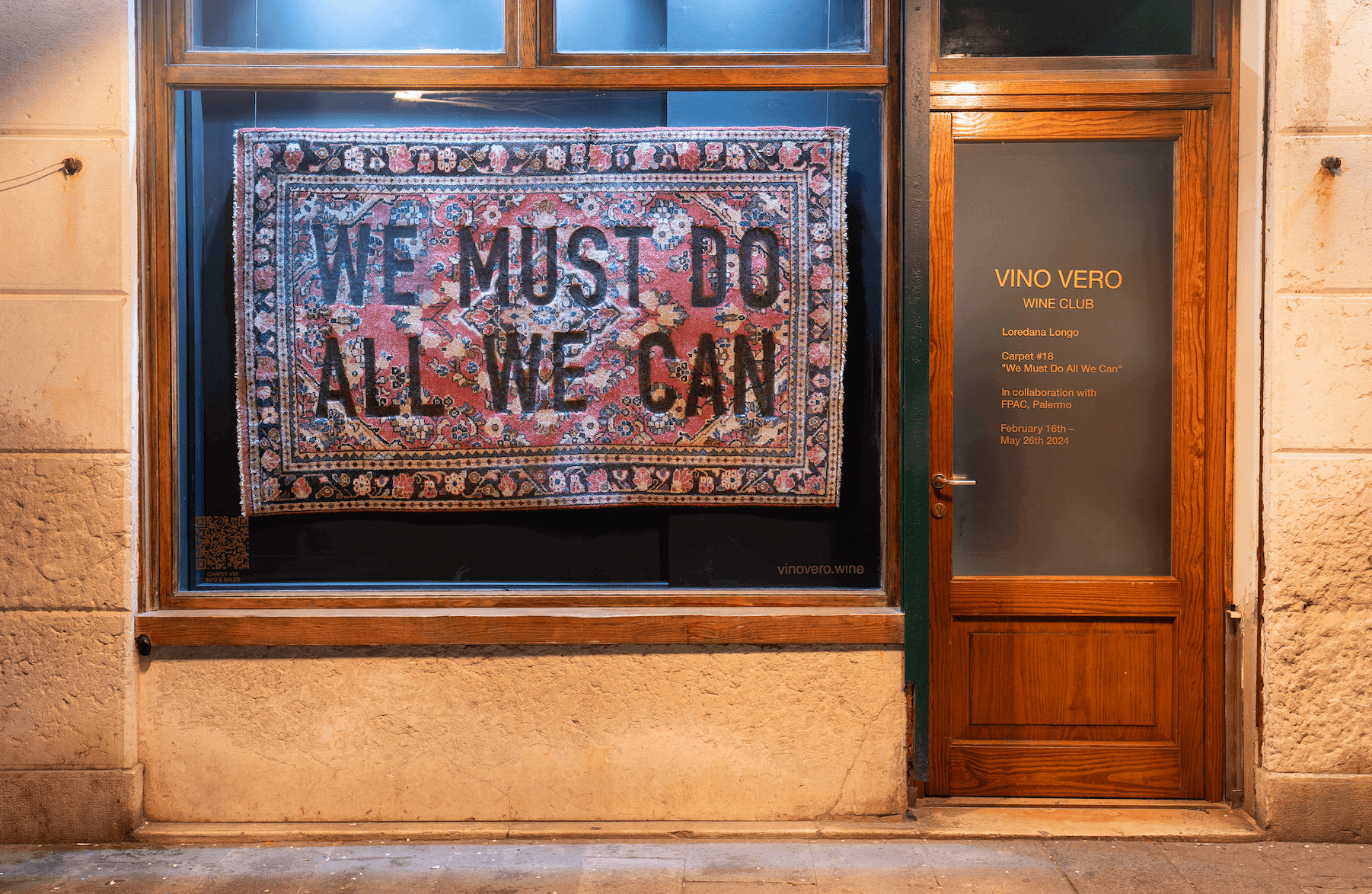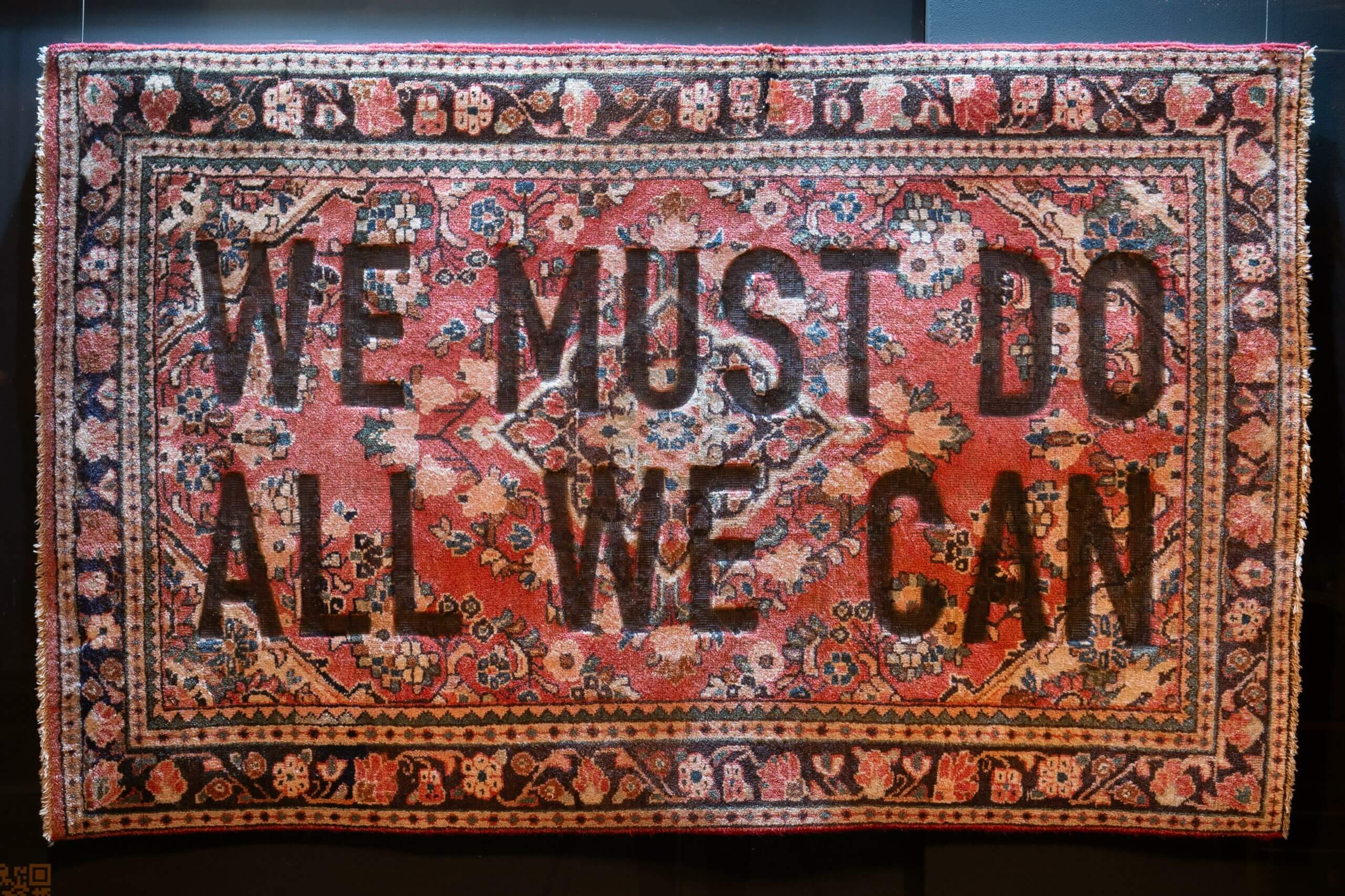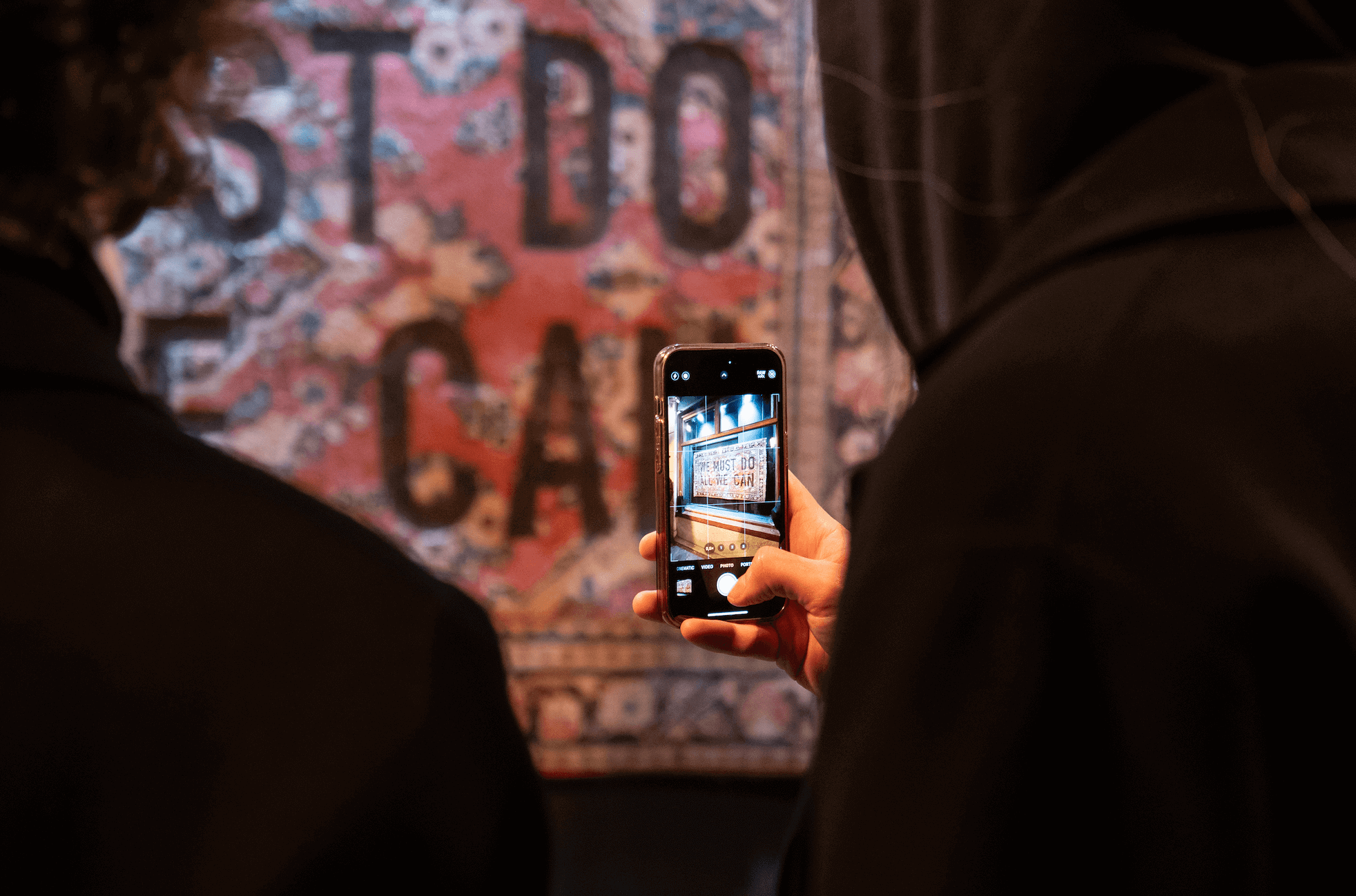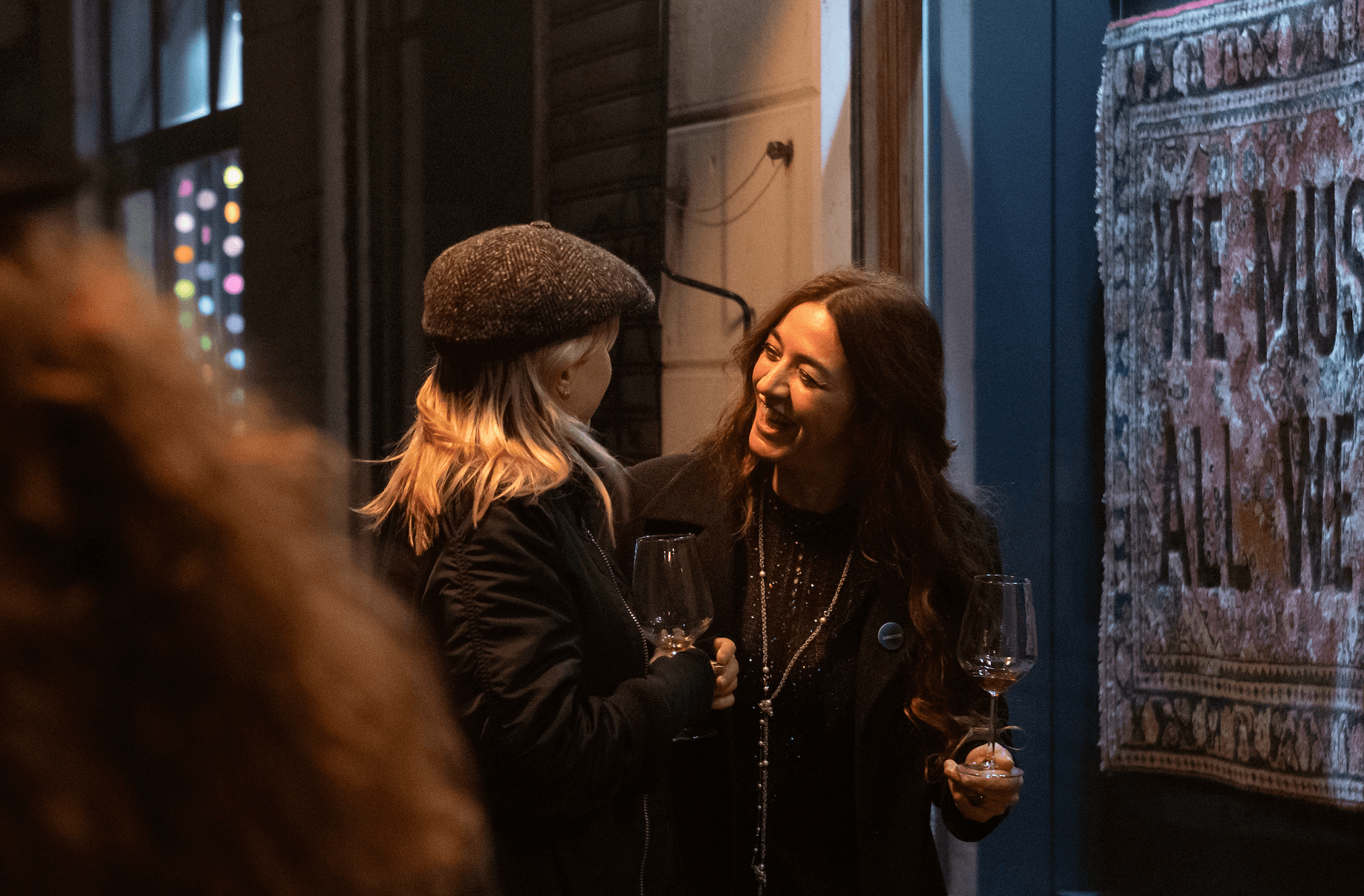Loredana Longo: Carpet #18, We Must Do All We Can
Loredana Longo
The theme of activism is central to your exhibition “Carpet #18, We Must Do All We Can”. How do you address social issues through your works and what message do you hope to convey to the audience?
I have rarely participated in public demonstrations or parades. I have always thought that everyone should express their thoughts in the most natural way and at the same time in the way that best suits their abilities. Beginning with personal and intimate research, I gradually embraced other realities, which included family, friends, strangers, other worlds, in short, all of humanity. In Carpet#18 “WE MUST DO ALL WE CAN,” the phrase urges action, doing the best we can, in fact, in all possible ways. This, like other phrases selected to become protagonists on the surface of my Carpets, could have multiple interpretations, and this is precisely what excites me: that everyone can read it and interpret it based on their own thoughts.

The “Carpet” series seems to create a dialogue between different cultures through the use of Oriental rugs and phrases from Western public figures embossed with fire. What inspired you to create this intersection between two worlds?
In 2012, during an artist residency (Madeinfilandia, Arezzo), I burned an enormous inscription into the grass of an airfield, a phrase from American President Barack Obama, “JUSTICE WILL BE DONE,” spoken by him after an attack in which an American ambassador lost his life. The phrase had symbolic meaning because the President had just received the Nobel Peace Prize. The next day, when I woke up, I saw the black, burnt inscription on the grass. What remains is only ash. A few days later, I reflected on the potential of the incendiary act. This is how my Carpet series was born. Phrases from Western politicians burned onto Oriental rugs, two worlds in comparison, superimposed, creating a metaphorical place of cultural tension. I find it very interesting that the carpet holds different meanings in various cultures.

Your artistic practice is defined by yourself as an exploration of the “aesthetics of destruction.” How do you reconcile this idea with your creative vision, and what challenges have you encountered in conveying this concept?
Are there places in the world where there has never been a conflict? We are too accustomed to rebuilding after destruction; we are children of wars, and humanity seems to repeat this cycle of destruction and reconstruction. The artist is not far from this concept, transforming the vision of the world, inventing from what they see, and their challenge is to continuously surpass themselves. For me, creation involves the partial destruction of something, as if in that remnant there lies salvation, indeed the most profound creative part.

You mentioned that fire is the most used medium in your works. What is the symbolic meaning of fire within your work, and how does it influence your artistic expression?
Fire is a medium, and I favour it because I recognise that it has an absolute power of transformation; there is no going back from the flames. Every day we encounter a flame, from the practice of cooking food to the simple lighting of a cigarette. Additionally, it has a cathartic value; it fascinates you and scares you with its destructive capabilities, but at the same time, it transforms matter.

The “Vetrina” project by Vino Vero offers a very special exhibition space, where the shop window becomes an integral part of the artwork itself. How did you adapt your work to this unique context, and what were the main considerations in displaying your works in such a confined yet public space?
When you create an artwork, you know that it will leave your studio, you are aware that someone will see it, and you display it. The shop window is the perfect place to show something; it exists for this reason. I found it interesting and also stimulating that this work could serve as a manifesto of an idea, filling the entire space. Anyone passing by the shop window will be able to read those words, a quick thought, a small reflection, or simply enjoy a drink while looking at the carpet’s pattern. Venice, the city of the Biennale, offers the opportunity to see works by the greatest living artists. Vino Vero offers a unique, privileged space, providing a moment of leisure and pleasure while enjoying the view of an artwork.




